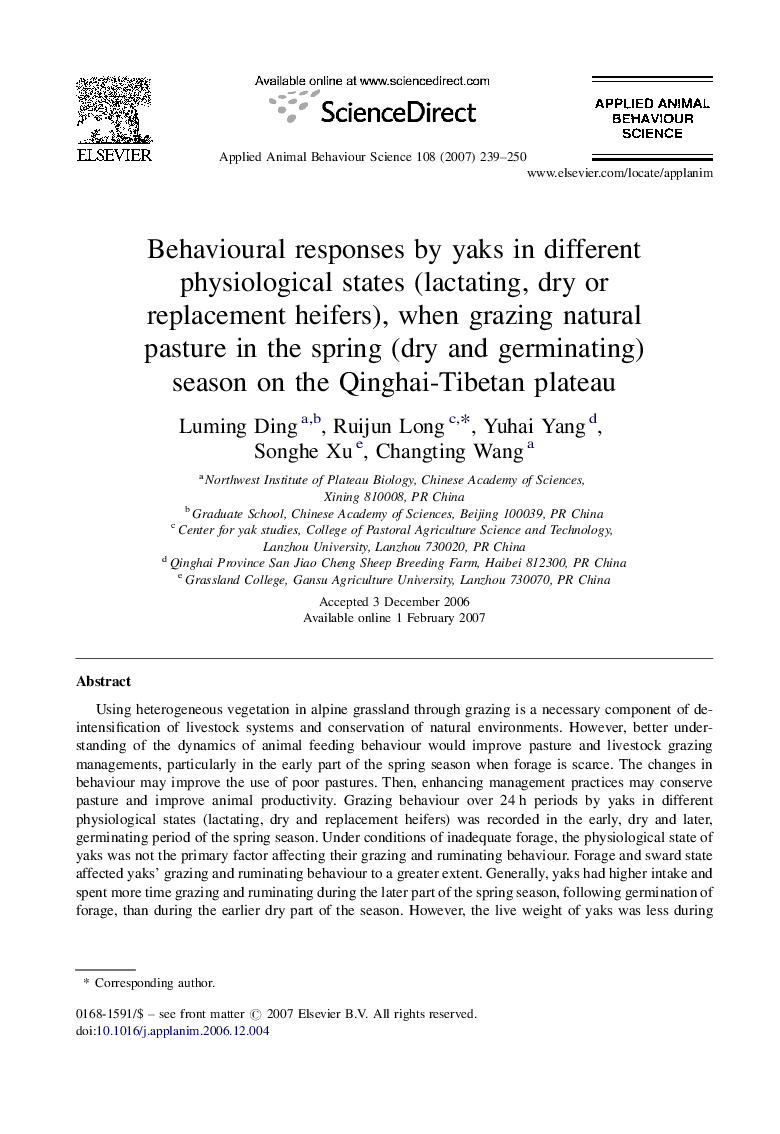| Article ID | Journal | Published Year | Pages | File Type |
|---|---|---|---|---|
| 4524140 | Applied Animal Behaviour Science | 2007 | 12 Pages |
Using heterogeneous vegetation in alpine grassland through grazing is a necessary component of de-intensification of livestock systems and conservation of natural environments. However, better understanding of the dynamics of animal feeding behaviour would improve pasture and livestock grazing managements, particularly in the early part of the spring season when forage is scarce. The changes in behaviour may improve the use of poor pastures. Then, enhancing management practices may conserve pasture and improve animal productivity. Grazing behaviour over 24 h periods by yaks in different physiological states (lactating, dry and replacement heifers) was recorded in the early, dry and later, germinating period of the spring season. Under conditions of inadequate forage, the physiological state of yaks was not the primary factor affecting their grazing and ruminating behaviour. Forage and sward state affected yaks’ grazing and ruminating behaviour to a greater extent. Generally, yaks had higher intake and spent more time grazing and ruminating during the later part of the spring season, following germination of forage, than during the earlier dry part of the season. However, the live weight of yaks was less during pasture germination than during the early dry part of the season because the herbage mass is low, and the yaks have to expend much energy to seek feed at this particular time.
